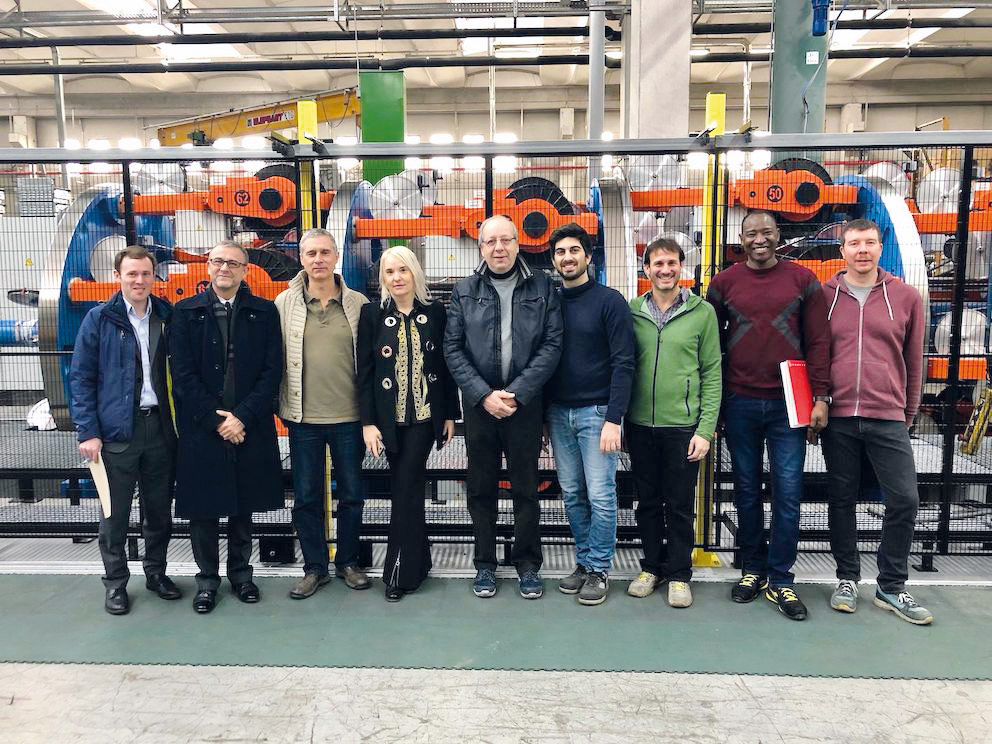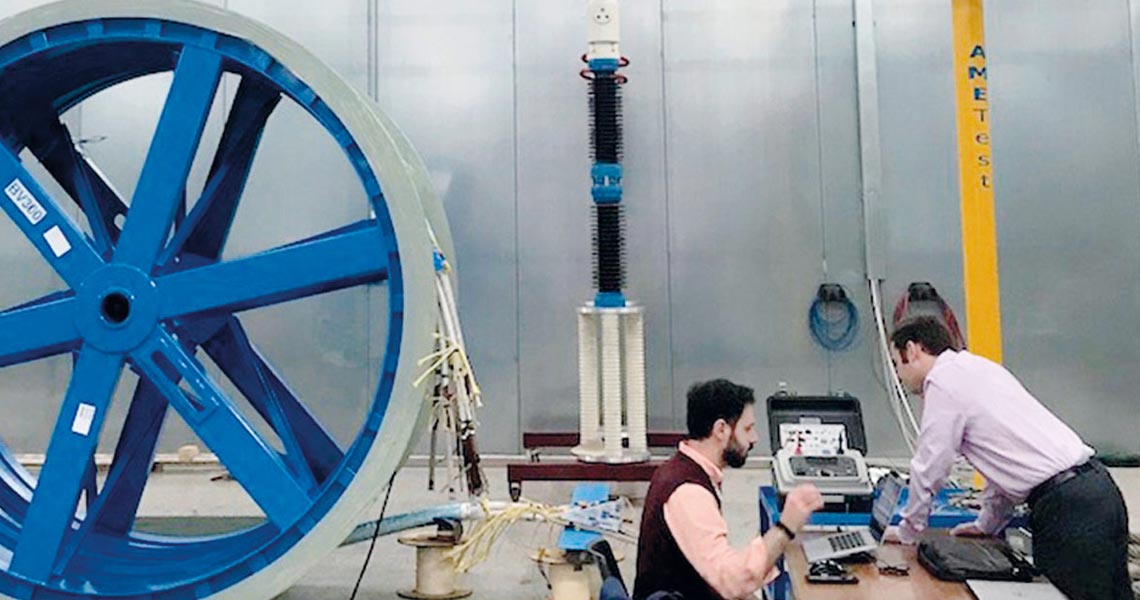The Large Hadron Collider (LHC) is the largest particle accelerator worldwide, developed and operational at the laboratories of the research organization CERN (Conseil Européen pour la Recherche Nucléaire – European Council for Nuclear Research), in Geneva.
The LHC, the most powerful microscope for the investigation of the matter and elementary particle physics, is hosted inside a tunnel of 27 km circumference, at about 100 m underground, across the territories of France and Switzerland. Beams of high-energy protons circulate in the accelerator ring and collide at an energy of 13 TeV (in high-energy physics, the electronvolt (eV) is used as the measurement unit of energy. 1 eV corresponds to the energy of an electron accelerated in vacuum by a 1 Volt potential difference; 1 TeV corresponds to 1000 billions of eV).
The observation of the reactions caused by the collision of two particle beams, allows to explore the deep constituents of sub-atomic matter and to reveal the important blocks of the elementary particle physics puzzle.
As a matter of fact, the researches carried out at CERN’s LHC, allowed for the first time to confirm experimentally the existence of what has been colorfully defined “God’s particle” (the Higgs boson, for the physicists!). The Higgs boson, considered the responsible for building the mass of any particle, was the missing link for the completion of the very important theory that describes the interaction between all elementary particles, named “Standard Model”.
Thanks to this experimental observation, in 2013 the Nobel prize in Physics was awarded to Peter Higgs and François Englert, who had proposed this mechanism about 50 years before.
This result has been the outcome of an immense work of thousands of researchers and engineers from every part of the world, who have designed, built, and brought to success an unprecedented scientific and technological endeavor. Beside the great steps ahead allowed by LHC toward the comprehension of the universe and the physics of elementary particles, its development has also produced numerous industrial and technological spin-offs.
The most remarkable and renowned example is the invention of the World Wide Web, born in response to the necessity to exchange large amounts of information and data among scientists spread over many countries around the globe.
In the effort to push further the advancement of science and technology, CERN researchers have now planned the new High Luminosity LHC (HL-LHC) project, that aims to increase the power of the LHC accelerator starting from 2027, thus allowing to carry out more accurate measurements of particle physics interactions, or to observe completely new phenomena.
Also concerning this last aspect, CERN is pursuing its mission, to push beyond the limits of existing technologies, and proposed the use of the magnesium di-boride (MgB2) material, never used before in such large scale and power applications. Each of the 10 Superconducting Links cables, about 100 m long, is made of an assembly of different electrically insulated sub-cables, supplying different electrical power circuits, and operates inside a flexible cryostat for the circulation of the cooling helium. Such cable should be able to carry an overall current of about 100.000 Ampere, operating at a temperature of up to 25 K, thus appreciably higher than the 1.9 K (about -270 °C) of the superfluid helium bath cooling the magnet system.
To achieve this challenging target, CERN has been working since some time to the development of new technologies, among which new superconducting magnets for particle beams bending, new optical devices and radio-frequency cavities for their focusing, and innovative superconducting cables for power transmission to the accelerator magnets from their power supplies.
TRATOS Cavi has taken up the big challenge of developing these innovative superconducting power transmission lines and has invested in the design and manufacture of cabling lines dedicated to the specific and particularly delicate handling of MgB2 wires, produced by another Italian company, Columbus Superconductors.
In fact, the high sensitivity of the performance of this material to mechanical tensile and bending stresses prevented from the use of any standard cabling machine.
After more than 2 and half years of development in collaboration with CERN, prototyping, design optimization and verification test on each of the numerous cable sub-components, TRATOS Cavi and the ICAS Consortium (Innovation and Consulting on Applied Superconductivity) have successfully completed the manufacture of the first entirely superconducting Links cable length.
The full functional test of the cable recently carried out at CERN, confirmed the expected performance and validated the MgB2superconducting cable design. This fundamental milestone toward the success of the entire project will provide a certain push toward the application of this technology for power transmission.
Author: Mr Luigi Muzzi










